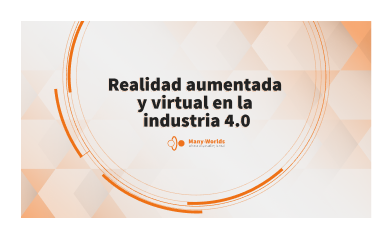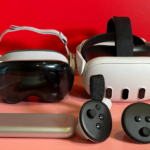The presence of web apps has become commonplace. The dichotomy between a website and a native app is becoming increasingly subtle. Even so, it’s always good to remember the benefits of this hybrid format when conveying certain content while also interacting with the user.
A good example of the advantages of developing applications in a web format is the symphony between the web app and augmented reality (AR), which allows for easier and more direct access to AR experiences.
What is a Web App?
A web application is defined by its functionality and interactive elements. Applications or apps began to be developed to allow internet users to perform online actions, whether it’s playing games on mobile, making a payment, or booking a doctor’s appointment. A web app allows for these same functions, but from a web browser. It’s a mix between an app and a website, as it allows interaction and actions to be performed, but it doesn’t require downloading; it’s hosted on the server.
The main features of web apps are that they are hosted in the cloud, so they don’t have space limitations, and that only one web app needs to be developed for different operating systems and platforms. All users use the same version, so there are no incompatibilities or need for maintenance. However, to meet peaks in demand and user expectations, web applications must be easily scalable, flexible, and secure.
The difference between a web app and a website is that the latter is one-directional, static. Websites offer us information, and we interact with them in that we can browse the menu, but little else; we don’t communicate with the site. A responsive website will be able to adapt to any type of screen, adjusting to mobile format, but it is not an app.
Often, when we browse a website from a mobile device with which we can interact (a web app), a pop-up appears asking if we would prefer to download the app. And that is precisely the main difference between a web application and an app: downloading.
To access a web app, no download or specific hardware is required, only an internet connection. Although mobile apps are designed for that format, focusing on functionality and enabling very direct interaction, their biggest drawback is the need to incorporate them into the device. This requires some “effort” on the user’s part and also takes up space.
Advantages of Web Applications
Web apps allow for many types of interaction and have a wide variety of functions that can be performed on different devices, with different browsers and operating systems. This versatility and adaptability make developing a web app complex and should be left to professionals. However, one of the advantages of web apps is that they reduce costs.
There’s no need for different versions; instead, the same version is accessible by multiple users from various platforms. Additionally, since a web application is software accessed from a browser, the data it generates is stored and accessible from the cloud; to interact with the web app, an interface is created that allows the user to easily consult and send information. Therefore, extensive maintenance or constant updates are not necessary.
The fact that the web app does not require downloading or any technical specifications beyond a connection makes it more likely that users will choose a web app over a native application when dealing with the same type of content and functions.
Web App and Augmented Reality: The Perfect Match
One of the challenges of augmented reality experiences is to eliminate the sci-fi aura that surrounds them, as if they were something “from the movies.” This is where the great value of adapting AR to the web app format lies, as it allows a large number of different user profiles to interact with these types of experiences.
The augmented reality web app allows access to 3D content in a physical environment that can be any space chosen by the user and interact with them. The user decides what they want to see, at what time, from what perspective, manipulating the 3D objects, etc. And all of this at no cost; the only thing they have to do is go to the AR web application address.
This is also advantageous for companies that want to introduce AR experiences (for example, in their marketing strategy, training, or as a service). On the one hand, AR in a web app demonstrates that this type of content is accessible to everyone. On the other hand, although they will obviously have to rely on the professional development of the web app, in the end, they will achieve greater profitability.
Examples of Augmented Reality Web Apps
At Many·Worlds, we have been advocating for AR web apps for some time and have developed several projects around this technology.
Santa Lucía: AR Web Application with Marker
For the “Make the Most of Your Insurance” campaign, we developed a web app with webAR technology accessible from a marker, which in this case was a QR code designed as a blue tile on a tablecloth that Seguros Santa Lucía customers received.
In this web app, a 3D apartment, inhabited by various characters, was recreated, where different everyday situations occurred. The user could choose the recreation of each one and direct the action to see the consequences of that situation (breakdowns, poorly executed works, power cuts, etc.) and check the coverage of each type of insurance.
Carrefour: AR Web Application without Marker
In the case of the 3D toy catalog for Carrefour, the augmented reality experience can be accessed from a QR code printed on the physical catalog itself, from a link on the website, and from a button integrated into the digital catalog.
The catalog includes more than 100 toys generated in 3D using photogrammetry techniques that the user can view in AR, blending virtual elements with the physical space. This way, children and adults can see the toys integrated into their real environment (their living room, garden, park, children’s room) and view important aspects such as the actual size of the toy, what’s included in the box, and the features it has, which are logically key aspects to support the purchase decision.
2 Eyes Vision: Web App for Professional Training with Gamification
The “SimVis” AR web app, developed for the company 2EyesVision, allows for the technical training of optical professionals in the calibration of the Simvis Gekko device through various interactive tutorials that can be accessed from anywhere with an internet connection. In this way, optical professionals can learn at their own pace, repeat the tutorials as often as they like, and even track their progress, which serves as motivation to advance. It is a web app that includes gamification elements, a highly effective way to learn through play.
These are just a few examples of what can be achieved when augmented reality is combined with web apps, but they are just a small sample. There are no limits. If you have an idea, let us know, and we will guide you on how to bring it to life and make it effective with the right technology and steps.







